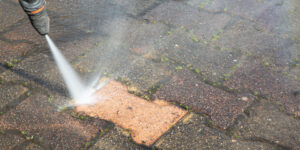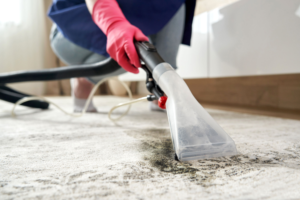Refrigeration is a process of removing heat from a space. It works on the simple physical principle that liquid expanding into a gas extracts heat from the surrounding material or air.
The fridge door is the warmest area of your fridge, so save it for drinks like whole milk and freshly squeezed juices (not to mention ketchup). Keep eggs and dairy on the lower shelves, where they’ll be colder and less likely to spoil. Click the https://alltemprefrigerationfl.com/ to learn more.

Refrigeration is a process of cooling foods or other objects by transferring heat from a hotter object to a colder one. The heat can be transferred by conduction, convection, or radiation. Refrigeration can be used to keep food fresh or to prevent spoilage. Refrigeration is also used to preserve medicines, vaccines, and other medical supplies. Refrigeration can reduce the growth of bacteria and viruses in foods, and can protect the organoleptic properties of food. It is used in many areas, including restaurants and supermarkets.
Mechanical refrigeration is a closed-loop system that uses mechanical components to transfer thermal energy. The system is powered by a refrigerant, usually a blend of hydrofluorocarbons or isobutane. The refrigerant moves through the refrigerator’s compressor, evaporator, and condenser. The compressor compresses the low-temperature, low-pressure refrigerant gas into a high-temperature, high-pressure vapor. The vapor then goes through the evaporator, where it absorbs the heat from the refrigerator’s contents and turns into a cold liquid. The liquid then flows into the condenser, where it is cooled down and changes back into a gas. The gas then returns to the evaporator, continuing the cycle.
The physics principle behind mechanical refrigeration is the first law of thermodynamics, which states that heat cannot move from a cooler body to a warmer one without the application of effort. The energy needed to transfer the heat must come from a source outside the refrigerator. This energy can be obtained from the surrounding atmosphere or a continually flowing stream of water, such as an air conditioner or a continuous flow of water through an insulated pipe.
Refrigeration is very efficient and is the best way to keep food fresh. In addition to reducing the cost of food, it can reduce waste from spoiling. It is a key technology for the food industry, allowing for a wider range of products to be stored at a lower temperature and for longer periods of time. Refrigeration is also an essential technology in the transportation of perishable goods, and can help to reduce costs. It is also widely used in data centers to cool servers and other equipment.
It is a process of cooling.
Refrigeration is a cornerstone technology that breathes life into numerous aspects of modern society. Its importance goes well beyond food preservation and climate control, as it also enables the production of industrial goods and advanced scientific endeavors. Refrigeration is a vital part of modern living and can be found in homes, restaurants, and businesses around the world. The basic refrigeration cycle consists of four components: compressor, metering device, condenser, and evaporator. The compressor is used to force the refrigerant from its liquid state into a gas. The metering device then regulates the pressure of the refrigerant and switches on the condenser when it’s needed. The condenser is then used to remove heat from the refrigerant, which in turn cools the surrounding area. Finally, the evaporator is used to return the refrigerant back to its liquid state.
The basic refrigeration cycle works on the long-known physical principle that a liquid expanding into a gas absorbs heat from the surrounding material. This principle is demonstrated by dipping your finger into alcohol and feeling it quickly cool down. This happens because the alcohol evaporates rapidly, absorbing heat from your finger and surrounding air. The refrigeration cycle applies this principle to refrigerators, using refrigerants with lower boiling points than water so they can evaporate at a much faster rate.
Throughout history, humans have tried to preserve foods by salting and drying them. However, their efforts were limited by the availability of refrigeration. In the 19th century, mechanical refrigeration was developed and introduced to commercial and residential applications. This revolutionized the food industry and facilitated the expansion of agricultural land in developed countries. It also enabled a broader range of foods to be available year-round. In addition, refrigeration has helped to reduce the amount of meat produced in a given area, which is better for health and environmental sustainability.
The refrigeration cycle is an integral component of modern society, and its benefits are felt in every aspect of daily life. It has been a key contributor to the growth of modern agriculture, manufacturing, and transportation industries. It has also influenced lifestyles, allowing for comfortable living and working environments in hot weather, and it has even been linked to higher productivity. It also supports various medical and pharmacological procedures, including blood transfusions, vaccines, and pharmaceutical products.
It is a process of preserving food.
Refrigeration is a process of cooling foods to a low temperature, slowing down the growth of bacteria and preventing them from spoiling. It can also preserve the texture and taste of food by stopping enzymes from reacting with the food. Refrigeration is one of the most common methods for preserving food, and it is widely used in both homes and restaurants. Refrigeration uses a mixture of mechanical and chemical processes to cool the food, and it is an energy-efficient way to store and transport perishable foods.
During the early years of refrigeration, people used to preserve food using natural resources such as ice and snow. This allowed them to travel long distances with their food, and it also allowed them to settle in cold regions that were previously uninhabited. In modern times, the refrigerator has become an essential part of everyday life. It keeps food fresh and healthy, and it allows us to enjoy foods from all over the world.
The refrigeration process is based on the principle that thermal energy moves from areas with high temperatures to those with lower temperatures. This energy is removed from the food by a refrigerant, which is circulated through a series of pipes. The cooling system is made up of a compressor, evaporator, and condenser, all of which are designed to work together.
In addition to being useful in preserving foods, refrigeration can be used to liquefy gases. It is also used in oil refineries and petrochemical plants to maintain certain reactions at their needed low temperatures. Additionally, it is used in metalworking to temper steel and produce high-octane gasoline components.
The use of refrigeration in food processing has dramatically changed the ways we produce and distribute our food. It has reduced the amount of time and money that farmers spend on storing and delivering their products, making them more efficient and productive. It has also increased the availability of new foods and made existing foods last longer. This has led to a larger concentration of agricultural sales from a smaller percentage of farms, allowing them to increase their outputs.
It is a process of heating.
Refrigeration is a process of reducing the temperature of an object or space. It is used in a variety of applications to preserve food and make products last longer, as well as to reduce humidity in buildings. It uses the same principles as natural cooling and works by transferring heat from a cold place to a warmer one. Refrigeration is a vital part of modern life and provides many benefits, including preserving food, making foods easier to eat, and keeping homes cooler and more comfortable.
The refrigeration cycle is based on the first law of thermodynamics, which states that energy cannot be created or destroyed, but only transferred from one location to another. In mechanical refrigeration, this energy is transferred by a system known as the vapor compression cycle or reverse-Rankine cycle. This system uses a refrigerant, which is circulated through a compressor and a condenser to absorb and reject heat. This is done by changing the state of the refrigerant from liquid to vapor and back again. The refrigerant is also pumped through a capillary tube, which acts as an expansion device.
In the compressor, the refrigerant is compressed from a low-pressure liquid to a high-pressure gas. This increases the amount of work the refrigerant must do to return to its original liquid state. This is why mechanical refrigeration systems require a large amount of energy to operate.
Once the refrigerant is in a gaseous state, it travels to the condenser, which is a coil-shaped heat exchanger that removes heat from the air in the refrigerator. The refrigerant is cooled as it travels through the heat exchanger, and this cooling causes it to evaporate into a gaseous state again. It is then pumped back to the evaporator, where it begins the cycle again.
In the evaporator, the refrigerant is cooled again as it evaporates into a liquid. It then passes through a metering device, which controls the flow of the refrigerant. The evaporator coils are cooled by the ice it contains, which transfers its latent heat to the ice (a form of transfer called condensation). As the ice melts and water drains away, it cools the product stored in the refrigerator.








